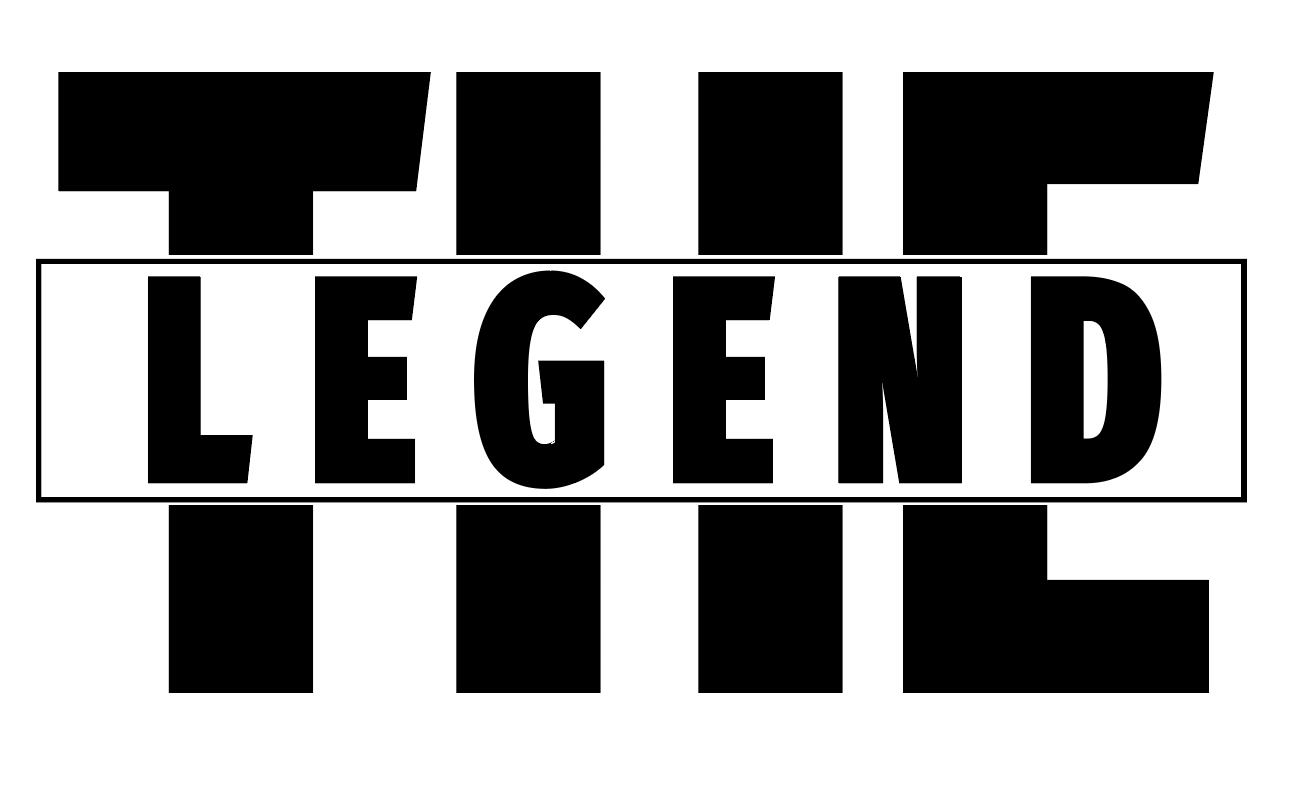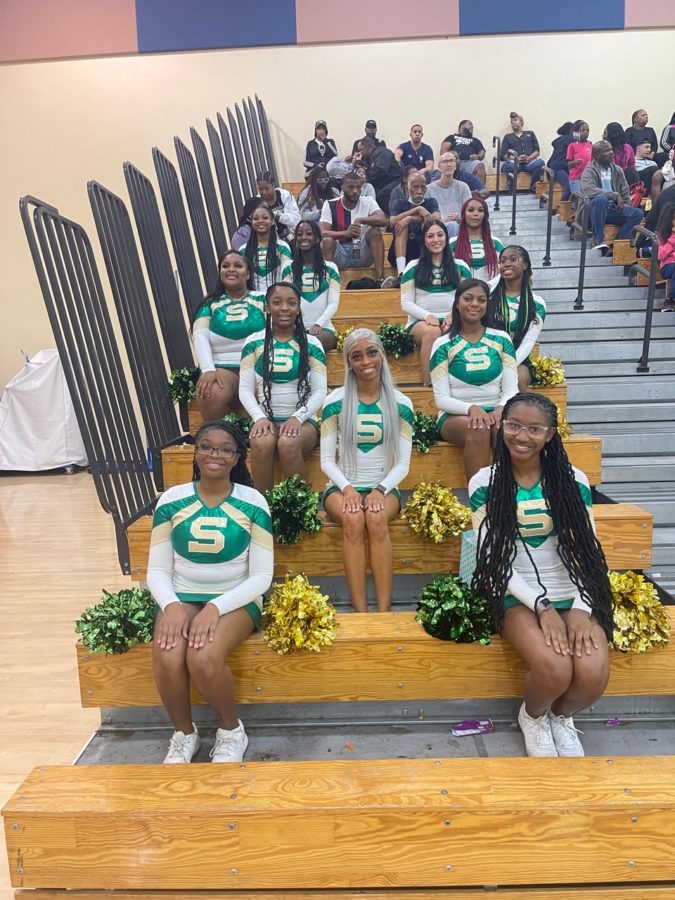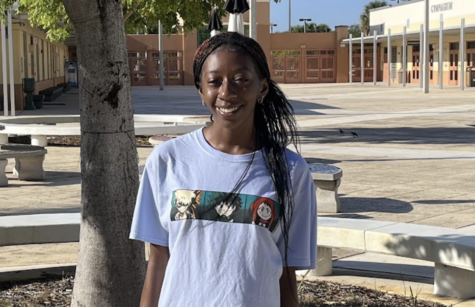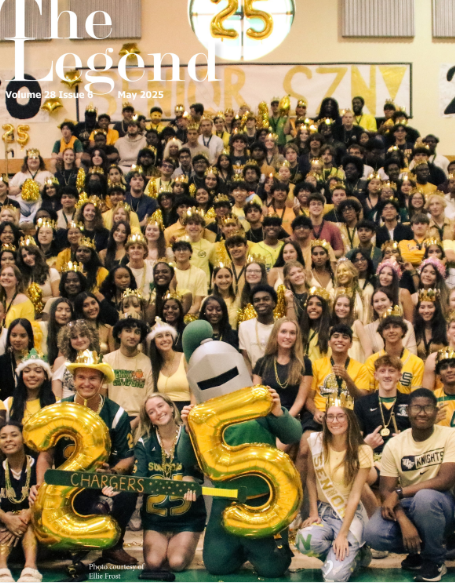Chargers Cheer
A look into the 2022-2023 cheer teams season.
Sideline cheerleaders waiting to perform
January 9, 2023
Suncoast is mostly known for its academic excellence and rigor. Behind Suncoast’s challenging programs is a variety of great sports. There has been a long ongoing debate on whether cheer is a sport or not. Despite requiring great skill and effort, cheerleading has not been officially recognized as a sport. Although cheerleading is not regarded as a sport, there’s still a difference between sideline and competitive cheer.
At Suncoast there are seasons split for cheerleading and competitive cheer. For the football and basketball seasons.
“I think when people think of cheer the first thing that comes to mind is not sport; it’s more like activity, extracurricular, but I would say that competition cheer is a lot hard work.When you think about what it takes to be an athlete in big sports like football and basketball, we use a lot of that technique to compete and cheer. You have to have good stamina, you have to have endurance,and be able to work cohesively as a team.” competitive cheerleader Anyla WIlliams(11) said. Williams highlighted the rigor of competitive cheer and how much it takes. She emphasized that competitive cheerleading takes a lot of hard work, dedication, strength, and the ability to work well with others.
Though cheerleading as a whole is difficult and requires much skill, sideline is more lenient on certain requirements, and is not as demanding. “I think sideline is more of an activity, like we are there to give support to players, but competition season is our Super Bowl; like we get to show everybody we work six months out of the school year. We get two months off in the whole school year; and even then you still have to be working out,” Williams said.
“The main difference is kind of the way that we perform. On the sideline we are there to help our team succeed, not us; just help support. As soon as it turns the corner to competition we are super rigorous, like we are not just there to make the crowd happy. It is a lot of hard work and takes more than just a pretty face,” competitive cheerleader Gianna Moscariello(11) said.
Competitive cheer demands a lot from the cheerleaders, there’s also no room for error because they are being judged. The competitive cheerleaders practice every week day and Saturday. Their bodies are constantly under pressure, “We have to perform 110 percent every time.” Moscariello said. “Over the years we’ve done really well with our competitions. Last year we were runner-up at state and top 10 at Nationals, and we made it to the final round each competition. No matter what our team always comes together and pushes through.” competitive cheerleader Lauren Adams(12) said.
As the basketball season started to approach, cheerleading coach Setutsi Dennis conducted tryouts for varsity and junior-varsity cheer. “The tryout took three days, and you could pick which day you wanted to go to. It was held in the dance room, and the judges were the coach and her two assistants, and also our captain Anniah. So it was one by one, you went in, and we learned cheers during clinics, we did the two cheers and if you could tumble or do anything to demonstrate your flexibility you could do that too.”, varsity cheerleader Natalia Castellon(11) said.
Dennis has curated a strong team, where the girls involved are able to feel comfortable, while also being pushed and motivated to be better in all aspects. “Coach D is a very nice coach, she’s very strict on us, she helps us with our cheers, she pushes us to our limits, but also supports us like a big sister.” varsity cheerleader Jazmine Bozeman(11) said. Dennis is very involved with both varsity and junior-varsity, and has high expectations for all the girls on the team. “ The expectation we have on the sideline cheer team is first to be good students, our coach always tells us that we were students before cheerleaders and she really stresses our grades. We also have expectations to be leaders and role models, our coach explained to us that cheerleaders are cheerful, happy, and leaders.”, Castellon said.
The main difference between sideline and competition is in the way the two teams practice and the amount of practice. Competition cheer practices all throughout the week and weekends, while sideline cheer has a less demanding schedule that goes on throughout the week excluding Fridays and sometimes Mondays. Competition cheer also requires more technique to be implemented because the team is competing against other teams nationally and statewide.
Whether sideline or competitive, cheer takes hard work and dedication along with maintaining good grades, and being a good role model inside and outside of school.








